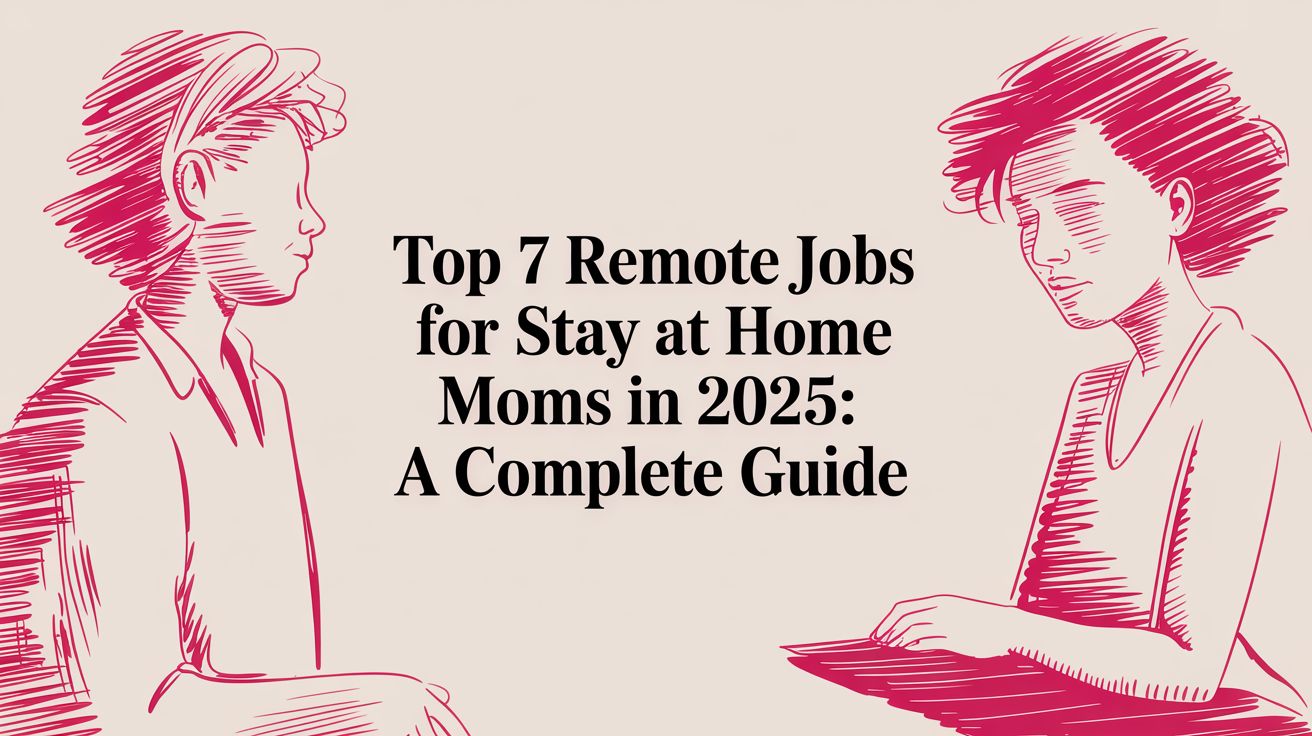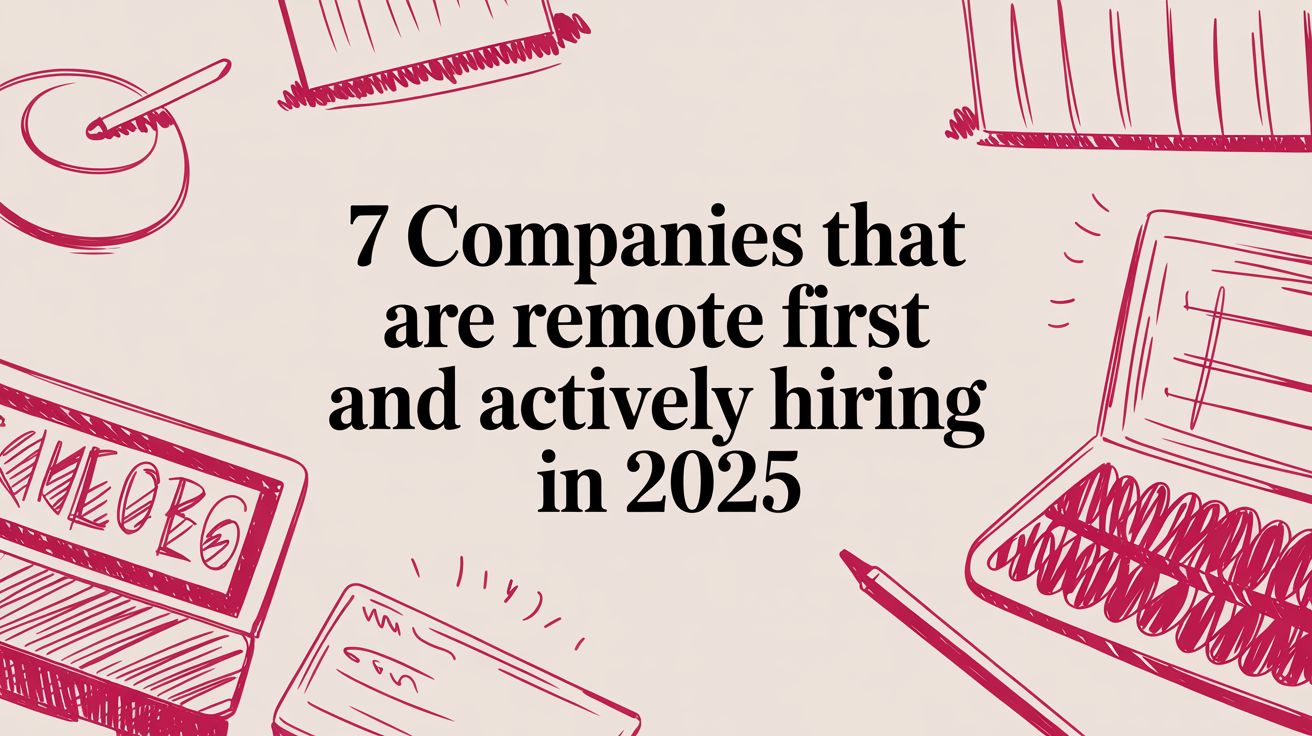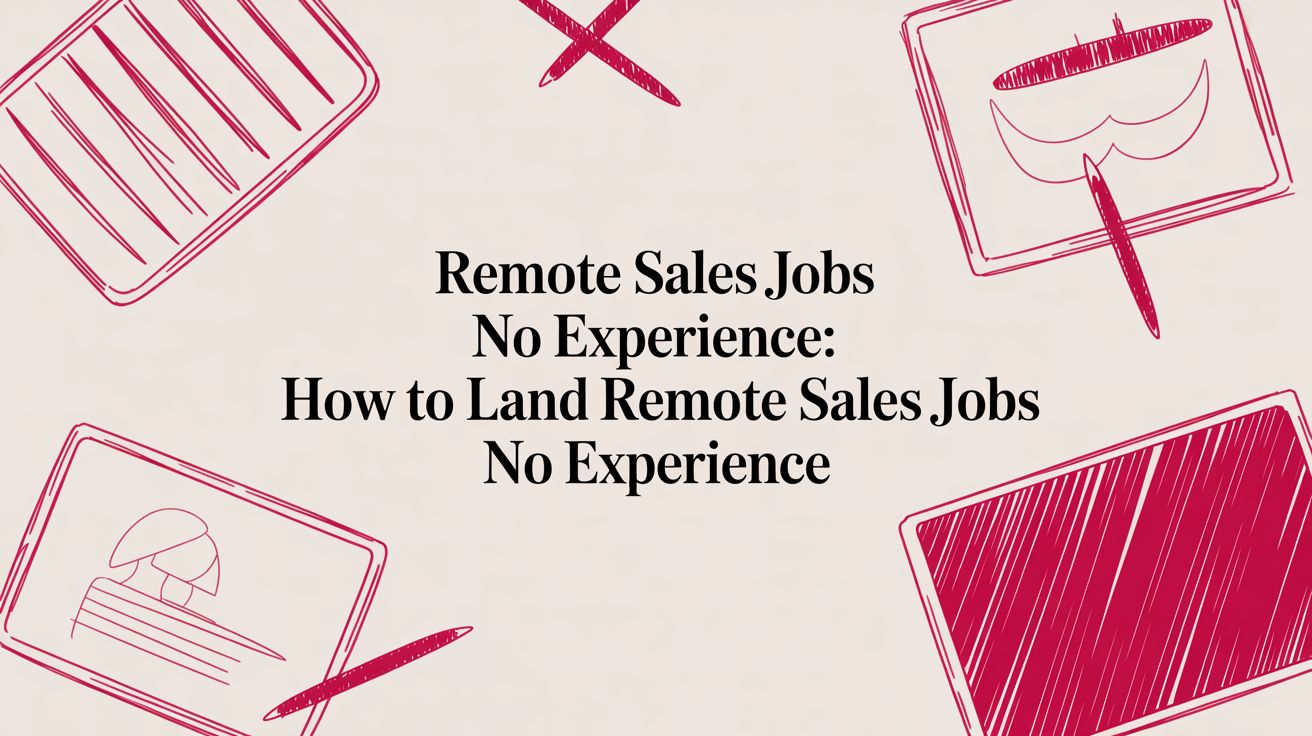9 Talent Acquisition Best Practices for Remote Teams in 2025
Max
In a world where the best talent can work from anywhere, traditional hiring methods are no longer sufficient. The shift to remote-first and hybrid work has permanently altered the competitive landscape, demanding a more strategic, agile, and candidate-centric approach to recruitment. Winning the war for talent now hinges on adopting forward-thinking talent acquisition best practices that not only attract top performers but also align with the values of a modern, distributed workforce.
This guide moves beyond generic advice to deliver nine proven strategies, specifically tailored for today’s hiring environment. We will explore actionable frameworks designed to give your organization a distinct competitive advantage. Forget outdated playbooks; success now requires a sophisticated blend of data, technology, and genuine human connection.
Inside this comprehensive roundup, you will discover how to:
- Leverage data-driven recruitment analytics to make smarter hiring decisions.
- Enhance your employer brand to create an irresistible candidate experience.
- Build proactive talent pipelines so you’re never starting a search from scratch.
- Implement structured behavioral interviewing for more objective and predictive evaluations.
From harnessing artificial intelligence to championing inclusive hiring, these practices are your roadmap to assembling a high-performing team, no matter where its members are located. Let’s dive into the essential strategies that will redefine your recruitment success and help you build the resilient, skilled workforce needed to thrive.
1. Data-Driven Recruitment Analytics
Moving beyond gut feelings and intuition, data-driven recruitment analytics is a cornerstone of modern talent acquisition best practices. This approach involves systematically collecting, measuring, and analyzing recruitment data to make informed, strategic decisions. By tracking key performance indicators (KPIs), you can pinpoint inefficiencies, identify high-performing sourcing channels, and optimize every stage of the hiring funnel, from initial outreach to final offer.
The core principle is to replace guesswork with evidence. Instead of assuming which job boards are effective, you can track the source of hire to see exactly which platforms deliver the best candidates. This not only improves efficiency but also significantly impacts the quality of new hires and the overall health of your talent pipeline. For remote-first companies, this practice is especially critical for understanding a globally distributed candidate pool and ensuring equitable hiring processes.
Why It’s a Best Practice
Leading companies have demonstrated the transformative power of this approach. Google’s renowned People Analytics team, pioneered by Laszlo Bock, uses predictive analytics to identify candidates with the highest probability of success. Similarly, Unilever leveraged data-driven assessment tools to reduce its hiring time by an astounding 75%, creating a more agile and responsive recruitment function. These examples show that analytics can lead to faster, cheaper, and more effective hiring.
How to Implement Data-Driven Recruitment
Adopting this practice doesn’t require a massive overhaul. You can start small and build momentum.
Start with Foundational Metrics: Begin by tracking essential KPIs. Don’t overwhelm your team with dozens of data points. Focus on what matters most, such as:
- Time-to-Hire: The duration from job posting to offer acceptance.
- Cost-per-Hire: The total recruitment cost divided by the number of hires.
- Source Effectiveness: Which channels (job boards, referrals, social media) produce the most qualified candidates.
- Candidate Quality Score: A post-hire metric evaluating new employee performance after a set period (e.g., 6 months).
Leverage Technology: Invest in an Applicant Tracking System (ATS) with robust analytics and reporting capabilities. Modern platforms like Workday or Greenhouse centralize data collection and provide dashboards to visualize trends, making it easier to extract actionable insights.
Train Your Team: Data is only useful if your hiring managers and recruiters know how to interpret it. Provide training on how to read reports and use the insights to guide their sourcing, screening, and interviewing decisions.
Ultimately, balancing quantitative data with qualitative feedback from interviews and candidate surveys provides a holistic view. This allows you to continuously refine your strategies, ensuring your talent acquisition efforts are not just successful but also strategically aligned with your organization’s goals.
2. Employer Branding and Candidate Experience
In a competitive market, your company’s reputation is a powerful magnet for talent. Strong employer branding involves shaping the perception of your organization as a great place to work, while a positive candidate experience ensures that perception holds true during the hiring process. This practice is about telling a compelling story through your culture, values, and employee value proposition, and then delivering on that promise at every candidate touchpoint.

The goal is to attract candidates who are not just skilled but also aligned with your company’s mission and values. It’s about creating an authentic narrative that resonates with your ideal talent pool, making them want to join your team before they even see a job opening. For remote companies, where culture is built through intentional communication rather than a physical office, a well-defined employer brand is non-negotiable for attracting top-tier global talent.
Why It’s a Best Practice
Pioneering companies have demonstrated that a strong employer brand directly translates to a stronger talent pipeline. Netflix’s famous culture deck, championed by former Chief Talent Officer Patty McCord, was a game-changer, offering radical transparency that attracted high-performers. Similarly, HubSpot’s Culture Code has been viewed millions of times, acting as a powerful recruitment tool that pre-qualifies candidates who align with their values of autonomy and transparency. These examples show that investing in your reputation pays dividends in attracting and retaining talent.
How to Implement Strong Employer Branding
Building a compelling employer brand and ensuring a great candidate experience is a continuous effort. Here’s how to start:
Audit Your Current Brand: Begin by understanding your current reputation. Use candidate surveys, read reviews on Glassdoor, and conduct exit interviews to gather honest feedback. This audit will reveal gaps between your intended and perceived brand.
Optimize Your Career Page: Your career page is your digital storefront. Enhance it with employee video testimonials, day-in-the-life content, and clear information about your mission, values, and benefits. Make it easy for candidates to envision themselves working with you.
Focus on the Candidate Journey: A positive candidate experience is a cornerstone of any talent acquisition best practice. Ensure clear communication, provide timely feedback, and treat every applicant with respect, regardless of the outcome. For more detailed strategies, explore this guide on improving candidate experience to attract top talent.
Empower Employee Advocates: Your current employees are your most credible brand ambassadors. Create an employee advocacy program that encourages them to share their authentic experiences on social media platforms like LinkedIn, offering a genuine glimpse into your company culture.
Ultimately, a strong employer brand is an authentic reflection of your internal culture. By focusing on both brand and experience, you create a virtuous cycle that attracts, engages, and retains the talent needed to achieve your business goals. For a deeper dive, learn more about what is candidate experience.
3. Proactive Talent Pipeline Development
Instead of scrambling to find candidates when a role opens, proactive talent pipeline development involves building relationships with potential hires before you even need them. This strategic approach transforms recruitment from a reactive, transactional process into a continuous, long-term function. It focuses on sourcing, engaging, and nurturing a community of qualified, passive candidates who are already familiar with and interested in your company.

The core principle is to always be recruiting. By maintaining a warm pool of talent, you dramatically reduce time-to-hire and gain access to high-caliber professionals who aren’t actively job-seeking. For remote-first companies, this practice is invaluable for building connections with a geographically diverse talent pool and staying ahead in competitive global markets.
Why It’s a Best Practice
This strategy is a hallmark of highly competitive industries. Amazon maintains robust talent pipelines for technical roles by hosting coding competitions and engaging with developer communities long before specific positions are posted. Similarly, professional services firms like Deloitte and McKinsey & Company build relationships with top MBA students years before graduation, ensuring a steady stream of elite talent. These examples prove that a well-nurtured pipeline provides a significant competitive advantage.
How to Implement Proactive Talent Pipelining
Building a talent pipeline is an ongoing effort that blends technology with genuine relationship-building.
Implement a Candidate Relationship Management (CRM) System: Use a CRM like Beamery or Avature to track candidate interactions, segment talent pools by skill set or role, and manage communication. This technology is essential for organizing your pipeline at scale.
Engage with Valuable Content: Keep your talent community warm by sharing relevant content. This could include company news, industry insights, employee spotlights, or information about your company culture. The goal is to provide value, not just job postings.
Host Virtual Events and Workshops: For a distributed audience, webinars, virtual Q&A sessions with team leads, or online workshops are excellent ways to build genuine connections. These events showcase your expertise and create a forum for interaction.
Automate Nurture Campaigns: Set up personalized, automated email campaigns for different talent segments. A campaign for software engineers might share technical blog posts, while one for marketers could highlight recent successful campaigns.
By investing in relationships before a need arises, you ensure that when a critical role opens up, you already have a shortlist of engaged, qualified candidates ready to go. This makes proactive pipelining one of the most effective talent acquisition best practices for achieving long-term hiring success.
4. Structured Behavioral Interviewing
Structured behavioral interviewing is a systematic approach designed to move beyond hypothetical questions and assess candidates based on their actual past performance. This method operates on the proven principle that past behavior is the most reliable predictor of future success. Interviewers use a predetermined set of job-relevant questions to evaluate specific competencies, asking candidates to provide concrete examples from their work history.

The core of this technique is the STAR method (Situation, Task, Action, Result), which guides candidates to structure their answers effectively. This framework ensures that every interview is consistent, fair, and focused on gathering evidence of required skills and behaviors. By standardizing the process, organizations can minimize unconscious bias and make more objective, evidence-based hiring decisions, a critical component of effective talent acquisition best practices.
Why It’s a Best Practice
This method is championed by high-performing organizations known for their rigorous talent selection. Amazon famously bases its interviews on its 14 Leadership Principles, using behavioral questions to see if candidates embody its core values. Similarly, Procter & Gamble has long used structured interviews to evaluate candidates against key competencies like leadership and problem-solving. This approach is not just for corporations; the U.S. Federal Government uses the STAR method across its agencies to ensure consistent and equitable hiring.
How to Implement Structured Behavioral Interviewing
Adopting this practice creates a more reliable and legally defensible interview process. Here’s how to get started.
Define Competencies and Build Question Banks: For each role, identify the 3-5 most critical competencies (e.g., collaboration, problem-solving, initiative). Develop a bank of behavioral questions for each competency, such as “Tell me about a time you had to complete a complex project with a tight deadline.”
Train Your Interviewers: Consistency is key. Train all hiring managers and interviewers on how to ask behavioral questions, use the STAR method for probing, and avoid common biases. This training ensures everyone is evaluating candidates against the same standard. For more guidance on excelling in this format, explore these remote interview tips.
Create Scoring Rubrics: Develop a simple scoring rubric with behavioral anchors. For example, a 1-5 scale for “collaboration” could define what a weak (1), average (3), and strong (5) answer looks like based on specific examples of behavior.
Document and Compare: Require interviewers to take detailed notes on the specific examples candidates provide. After all interviews are complete, the hiring team can compare these notes and scores to make a data-informed decision rather than relying on a general “feel.”
5. Artificial Intelligence and Automation
The integration of artificial intelligence (AI) and automation is revolutionizing talent acquisition by handling high-volume, repetitive tasks. This technology-driven approach uses AI-powered tools to streamline recruitment processes from resume screening and candidate matching to interview scheduling and initial assessments. By automating these functions, recruiters can focus their expertise on more strategic, high-value activities like building candidate relationships and making final hiring decisions.
The core principle is to enhance efficiency and objectivity. Instead of manually sifting through hundreds of resumes, AI can parse applications and surface the most qualified candidates based on predefined criteria. This not only accelerates the hiring process but also helps mitigate unconscious bias in the initial screening stages. For remote-first companies managing a global talent pool, these tools are invaluable for processing diverse applications at scale while maintaining a consistent evaluation standard.
Why It’s a Best Practice
Leading technology and global corporations have shown the massive potential of AI in recruitment. For instance, Pymetrics uses neuroscience games and AI to match candidates to roles based on their inherent cognitive and emotional traits, moving beyond traditional resume-based evaluations. Similarly, HireVue employs AI to analyze video interviews, assessing verbal and non-verbal cues to help predict job performance. These examples demonstrate that AI can create a more efficient, equitable, and data-informed hiring process.
How to Implement AI and Automation
Integrating AI into your workflow can be done incrementally to ensure a smooth transition and positive impact on your talent acquisition best practices.
Start with Simple Automation: Begin by automating straightforward, time-consuming tasks. Implement tools for:
- Resume Parsing: Automatically extract key information from resumes into your ATS.
- Interview Scheduling: Use chatbots or automated schedulers to coordinate interview times with candidates.
- Augmented Writing: Leverage tools like Textio to optimize job descriptions to attract a more diverse and qualified applicant pool.
Audit for Bias and Maintain Oversight: AI is a powerful tool, but it requires human governance. Regularly audit your AI systems for accuracy and potential biases to ensure fairness. It is crucial to maintain human oversight in all final hiring decisions, using AI as a support mechanism rather than the ultimate decision-maker.
Train Your Recruitment Team: Equip your recruiters with the knowledge to use these tools effectively. Provide training on the capabilities and limitations of your AI platforms, ensuring they understand how to interpret the data and integrate it into their overall candidate assessment strategy.
Ultimately, the goal is to blend technological efficiency with human judgment. This balanced approach allows you to scale your recruitment efforts effectively while keeping the candidate experience personal and engaging.
6. Diverse and Inclusive Hiring Practices
Building diverse and inclusive teams is not just a social imperative but a proven business advantage. This talent acquisition best practice involves systematically reviewing and redesigning every step of the hiring process to eliminate bias and ensure equitable opportunities for all candidates. It goes beyond simple representation, aiming to create a workforce where diverse perspectives are actively sought, valued, and integrated into the company culture.
This comprehensive strategy requires a conscious effort to attract, evaluate, and select candidates from a wide range of backgrounds, experiences, and identities. For remote-first companies, intentional D&I practices are even more critical, as they provide access to a global talent pool and must proactively build an inclusive virtual environment. A commitment to fair hiring practices is essential for attracting top talent in a competitive market.
Why It’s a Best Practice
Companies that prioritize D&I see tangible benefits in innovation, employee engagement, and financial performance. Intel, for example, invested $300 million in diversity initiatives and successfully achieved full representation of women and underrepresented minorities in its U.S. workforce. Similarly, Salesforce conducts regular pay equity audits and uses diverse interview panels, creating a more equitable and trusted workplace. These examples demonstrate that intentional D&I efforts build stronger, more resilient organizations.
How to Implement Diverse and Inclusive Hiring
Integrating D&I into your recruitment strategy requires a multi-faceted and ongoing commitment.
Audit and Refine Job Descriptions: Start by reviewing your job postings for biased or gender-coded language using tools like Textio. Remove non-essential requirements that might discourage qualified candidates from underrepresented groups from applying. Focus on core competencies rather than specific years of experience.
Expand Sourcing Channels: Move beyond traditional job boards and actively source from diverse professional networks, community groups, and organizations like Jopwell or PowerToFly. Building relationships with these communities creates a sustainable pipeline of diverse talent.
Standardize the Interview Process: Implement structured interviews where all candidates are asked the same job-related questions. To ensure truly diverse and inclusive hiring, the interview process must be thoughtfully designed; for actionable insights, consider exploring a guide on effective DEI interview questions that uncover a candidate’s commitment to these values. Consider blind resume reviews to remove identifying information and reduce unconscious bias in the initial screening phase.
Ultimately, D&I is not a one-time initiative but a continuous practice of improvement. By embedding these principles into your talent acquisition strategy, you not only create a fairer hiring process but also build a more innovative and high-performing organization.
7. Skills-Based Assessment and Hiring
Shifting focus from pedigree to proficiency, skills-based hiring prioritizes a candidate’s demonstrable abilities over traditional credentials like degrees or years of experience. This talent acquisition best practice involves using practical assessments, work samples, and structured skills tests to accurately predict a candidate’s on-the-job performance. It levels the playing field, allowing you to identify top talent who can deliver results, regardless of their formal background.
This approach is about validating competency directly. Instead of using a college degree as a proxy for capability, you assess the actual skills required for the role, such as coding proficiency for a developer or content creation skills for a marketer. For remote teams, this methodology is particularly effective as it evaluates a candidate’s ability to execute tasks autonomously and produce quality work, which are critical success factors in a distributed environment.
Why It’s a Best Practice
Leading tech and professional services firms have proven the value of this model. IBM pioneered its “new collar jobs” initiative, filling thousands of roles by focusing on skills acquired through bootcamps and certifications rather than four-year degrees. Similarly, Google famously relaxed degree requirements for many technical roles, finding that demonstrated problem-solving abilities were a far better predictor of success. These examples highlight how skills-based hiring broadens the talent pool and improves the quality of hire.
How to Implement Skills-Based Hiring
Integrating this practice is a strategic move toward more effective and equitable recruitment.
Define Core Competencies: For each open role, work with hiring managers to identify the 3-5 non-negotiable skills required for success. Distinguish between “must-have” technical abilities and “nice-to-have” qualifications.
Develop Relevant Assessments: Create assessments that mirror real-world job tasks. This could be a short coding challenge for an engineer, a case study analysis for a consultant, or a request to draft a marketing email for a communications role. The goal is to simulate the job, not create an abstract test.
Use Validated Tools and Processes: Leverage validated assessment platforms to ensure fairness and reliability. Provide all candidates with clear instructions, standardized evaluation criteria, and the same timeframe to complete the task. This ensures the process is consistent and defensible. You can learn more about how to structure this process by exploring what is skills-based hiring.
By focusing on what candidates can do rather than where they studied, you build a more diverse, capable, and resilient workforce. This strategic shift ensures your talent acquisition efforts are directly tied to performance outcomes.
8. Mobile-First Recruitment Strategy
A mobile-first recruitment strategy acknowledges the modern reality of job seeking: candidates are on the go. This approach involves designing the entire hiring process, from the initial job search to the final application, to be seamless and intuitive on smartphones and tablets. It moves beyond a “mobile-friendly” website to a “mobile-first” mindset, where the mobile experience is the primary consideration, not an afterthought.
The core principle is to meet candidates where they are. A cumbersome, desktop-only application process creates significant friction and leads to high drop-off rates, especially among tech-savvy professionals and those in high-volume industries. By optimizing for mobile, you expand your talent pool, improve the candidate experience, and accelerate your hiring timeline, making it one of the most impactful talent acquisition best practices for today’s market.
Why It’s a Best Practice
Leading companies in high-volume sectors have proven the effectiveness of this strategy. For instance, McDonald’s implemented a mobile-first application process that resulted in 20% faster completion times. Similarly, Walmart redesigned its mobile application to reduce the time-to-apply from a lengthy 45 minutes down to just 10 minutes, dramatically increasing the volume of completed applications. These examples highlight how a mobile-first approach directly removes barriers for potential hires.
How to Implement a Mobile-First Strategy
Transitioning to a mobile-first strategy involves both technological and process-oriented adjustments.
Simplify the Application: Drastically reduce the number of required fields. Use progressive profiling to gather more detailed information later in the process. Ask for only the essentials upfront, such as a name, email, phone number, and a resume or LinkedIn profile.
Enable Easy Logins and Uploads: Implement social login options (e.g., “Apply with LinkedIn” or Google) to minimize manual data entry. Ensure your system allows candidates to easily upload documents from cloud storage services like Google Drive or Dropbox directly from their phones.
Test Extensively and Use SMS: Routinely test your entire application process on various mobile devices and operating systems (iOS and Android) to identify and fix any points of friction. Leverage SMS for timely communications like interview reminders or status updates, as text messages have a significantly higher open rate than emails.
Ultimately, a mobile-first strategy ensures your opportunities are accessible to the widest possible audience. It signals that your organization is modern, respects candidates’ time, and is committed to providing a positive and efficient experience from the very first interaction.
9. Strategic Talent Community Building
Instead of starting the recruitment process from scratch for every open role, strategic talent community building shifts the focus to nurturing long-term relationships. This approach involves creating an engaged network of potential candidates, industry professionals, and brand advocates who are connected to your organization, regardless of immediate hiring needs. It transforms transactional recruitment into a sustainable ecosystem of talent.
The core principle is to provide consistent value to a curated audience, establishing your company as a desirable place to work long before a job opening is even posted. This proactive strategy is one of the most effective talent acquisition best practices for building a resilient pipeline, especially for specialized roles or in competitive, remote-first markets. You engage with passive talent through content, events, and networking, so when a need arises, you have a warm pool of pre-vetted, interested candidates.
Why It’s a Best Practice
Leading organizations demonstrate the power of this long-term investment. Salesforce’s Trailblazer Community offers free training and networking, positioning the company as an industry leader and creating a direct pipeline of skilled professionals. Similarly, Deloitte maintains a robust alumni network, fostering connections with former employees who often become clients, brand ambassadors, or boomerang hires. These examples show how a community-driven approach builds brand loyalty and dramatically reduces time-to-hire.
How to Implement Strategic Talent Community Building
Building a community is an ongoing effort that requires a value-first mindset.
Define Your Audience and Value Proposition: Identify the key talent personas you want to attract. What value can you provide them beyond a job offer? This could be exclusive industry content, career development workshops, access to experts, or networking opportunities.
Choose the Right Platforms: Select channels where your target audience is already active. This might include a dedicated Slack or Discord channel, a LinkedIn group, a regular newsletter, or a series of virtual events and webinars.
Engage with Valuable Content and Events: Consistently share insights, host expert Q&As, and facilitate discussions. Focus on providing genuine value before you promote job opportunities. The goal is to build trust and establish thought leadership.
Foster Authentic Connections: Encourage member-to-member interaction and create mentorship programs. The strongest communities are those where members feel a sense of belonging and connection not just to the company, but to each other.
By cultivating these relationships, you create a powerful, self-sustaining talent source that not only fills roles faster but also enhances your employer brand across the industry.
Talent Acquisition Best Practices Comparison
| Item | Implementation Complexity 🔄 | Resource Requirements ⚡ | Expected Outcomes 📊 | Ideal Use Cases 💡 | Key Advantages ⭐ |
|---|---|---|---|---|---|
| Data-Driven Recruitment Analytics | High - requires technological integration and training | High - investment in ATS, analytics tools | Improved recruitment ROI, evidence-based decisions, process optimization | Organizations aiming for strategic workforce planning and process optimization | Enables data-backed hiring, identifies bottlenecks, enhances candidate experience |
| Employer Branding and Candidate Experience | Medium - requires ongoing coordination across departments | Medium - content creation, marketing, communication | Attracts quality candidates, improves offer acceptance rates, enhances reputation | Companies focusing on long-term brand strength and candidate engagement | Builds strong employer reputation, reduces cost-per-hire, competitive advantage |
| Proactive Talent Pipeline Development | Medium to high - needs CRM systems and sustained engagement | Medium to high - dedicated resources for nurturing and events | Reduced time-to-hire, access to passive candidates, higher quality hires | Firms targeting critical roles and passive talent pools | Provides ready talent pools, reduces agency dependence, competitive talent access |
| Structured Behavioral Interviewing | Medium - requires interviewer training and question bank setup | Low to medium - focus on process and training | Higher quality hires, reduced bias, legal defensibility | Organizations seeking consistent, objective candidate evaluation | Increases objectivity, improves prediction of job performance, legal compliance |
| Artificial Intelligence and Automation | High - complex setup and tech maintenance | High - AI tools, ongoing updates, monitoring | Faster processing, reduced administrative tasks, less bias in screening | High-volume hiring environments seeking efficiency | Significantly increases efficiency, 24⁄7 engagement, improved matching accuracy |
| Diverse and Inclusive Hiring Practices | Medium to high - cultural change and training needed | Medium - training, monitoring, and partnerships | Broader talent pools, enhanced innovation, reduced legal risks | Organizations committed to equity and workforce diversity | Expands diversity, improves team performance, enhances brand reputation |
| Skills-Based Assessment and Hiring | Medium - development of assessments and manager training | Medium - assessment tools and design time | Identifies true job-fit, reduces bias, supports diversity | Roles where demonstrated skills matter more than credentials | Focus on capabilities, expands talent pool, better predictor of performance |
| Mobile-First Recruitment Strategy | Medium - requires design and tech optimization | Medium - mobile tech and platform updates | Faster applications, lower abandonment rates, better engagement | High-volume recruitment targeting mobile-first candidates | Improves candidate experience, speeds up application process, increases reach |
| Strategic Talent Community Building | High - long-term investment, community management required | Medium to high - events, content, engagement staff | Sustainable pipelines, brand advocacy, market insights | Companies investing in industry presence and long-term relationships | Builds lasting networks, reduces recruiting costs, generates referrals |
From Strategy to Success: Activating Your New Hiring Playbook
Mastering talent acquisition in today’s competitive, remote-first landscape is not about finding a single magic solution. It is about building a dynamic, interconnected system designed for resilience and growth. The journey through the nine talent acquisition best practices in this article reveals a clear blueprint for success, shifting the focus from reactive vacancy-filling to strategic, proactive team building. This is not just a list of tips; it is a holistic playbook for creating a sustainable competitive advantage in the war for talent.
The core theme weaving through these strategies is a powerful shift: moving from intuition to insight. By embracing data-driven recruitment analytics, you replace guesswork with measurable outcomes, optimizing everything from source effectiveness to time-to-hire. This analytical foundation empowers every other practice, from refining your employer brand to ensuring your diversity and inclusion initiatives are truly impactful.
The Interconnected Pillars of Modern Recruitment
The true power of these practices emerges when they are implemented as a cohesive system, not as isolated tactics. Consider how they reinforce one another:
- A compelling employer brand (Practice #2) attracts passive candidates into your proactive talent pipeline (Practice #3).
- AI and automation (Practice #5) free up your recruiters’ time to focus on building meaningful connections within your strategic talent community (Practice #7).
- Structured behavioral interviewing (Practice #4) and skills-based assessments (Practice #6) work in tandem to create a hiring process that is not only more predictive of on-the-job success but also inherently more equitable and inclusive.
This synergy creates a flywheel effect. A positive candidate experience fuels your employer brand, which in turn makes proactive pipelining easier. Effective, fair assessments lead to better hires, who then become advocates for your company, further strengthening your brand. This is the essence of a modern, high-functioning talent acquisition engine.
Your Actionable Path Forward
Transforming your hiring strategy can feel daunting, but progress begins with focused, incremental steps. Instead of attempting a complete overhaul overnight, identify the one or two areas that represent your biggest opportunities for improvement.
- Start with an Audit: Where are you currently succeeding, and where are the most significant gaps? Use the practices outlined here as a checklist. Are you tracking key metrics? Is your interview process structured and consistent? Is your mobile application process seamless?
- Prioritize for Impact: Select a single practice to master first. If your candidate drop-off rate is high, focus on improving the candidate experience and implementing a mobile-first strategy. If you consistently struggle to find qualified candidates for key roles, dedicate resources to proactive talent pipeline development.
- Equip Your Team: Activating this playbook requires the right support. To successfully implement AI, automation, and data analytics, staying informed about the top tools for recruiters is crucial for maximizing efficiency and effectiveness. Empower your team with the technology that allows them to focus on high-value human interaction.
By committing to this new playbook, you are investing in the most critical asset your organization has: its people. Mastering these talent acquisition best practices is your key to building not just a team, but a thriving, engaged, and high-performing remote workforce that will drive your company’s vision forward for years to come.
Ready to put these best practices into action and connect with a global pool of qualified, remote-ready professionals? Remote First Jobs provides the ideal platform to showcase your employer brand and attract the talent you need to build your exceptional remote team. Post your job opening today on Remote First Jobs and start building the future of your company.


